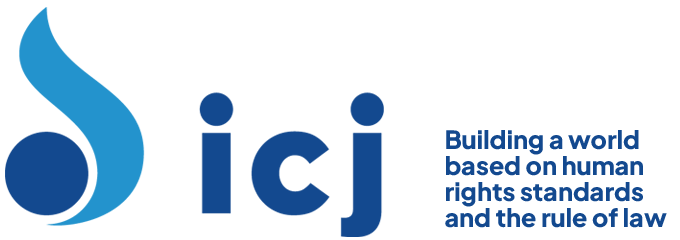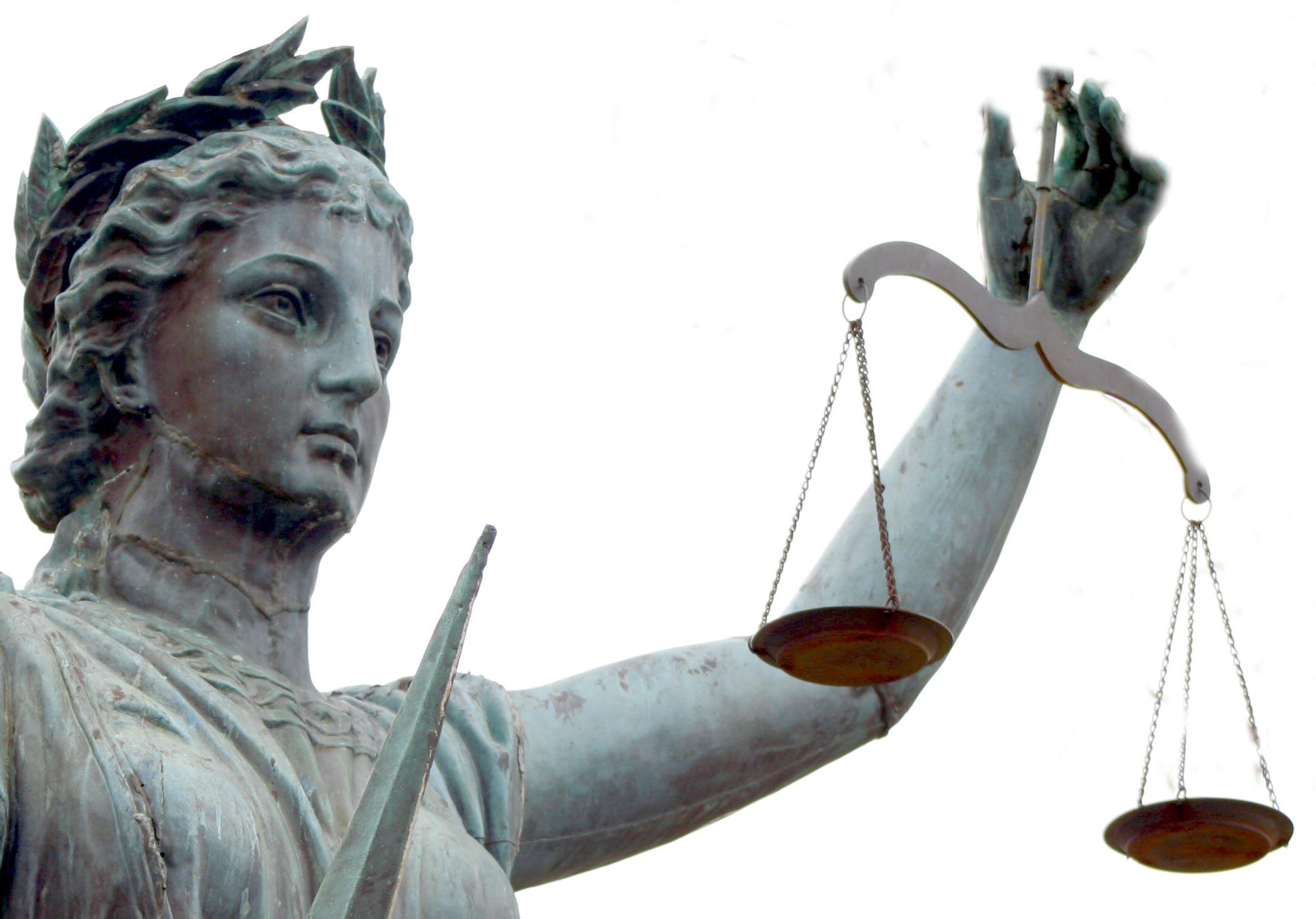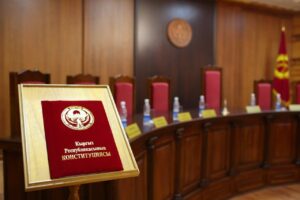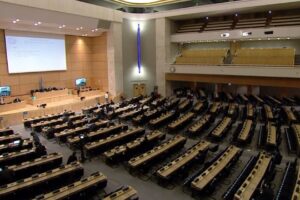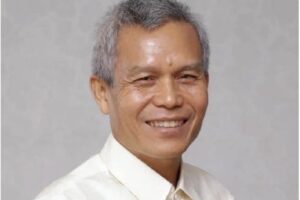The Constitution establishes the “justice system” (“Sistema de Justicia”) composed of the Supreme Tribunal of Justice, other courts determined by law, the Office of Public Prosecutions, the Public Defender’s Office, judicial assistance and officials, the penitentiary system, alternative means of justice, the citizens participating in the administration of justice in accordance with the law, and lawyers authorized to exercise the legal profession.{{1}} It also recognizes that the power to dispense justice is an expression of the citizens’ sovereignty.{{2}} The organs of Judicial Power are empowered to address cases and matters within their competence according to procedures established by law, and to take measures to enforce their judgments.{{3}}
The Legislative Power was given one year from the adoption of the Constitution to approve the Law organizing the Judicial Power.{{4}} However, as of 12 August 2014, this law had not been enacted. Accordingly, the Organic Law of the Judicial Power (OLJP), enacted in 1998, remains applicable.
Under the OLJP, the Judicial Power is constituted of: the Supreme Court of Justice (the Supreme Tribunal of Justice (STJ) since the adoption of the 1999 Constitution), the courts of ordinary jurisdiction, and the tribunals of special jurisdiction.{{5}}
The tribunals of ordinary jurisdiction are organized in four levels:
- Courts of Appeal;
- Higher Tribunals;
- Courts of First Instance; and,
- Municipal Courts.
There are two types of Municipal Courts: ordinary courts (which are recognized as tribunals and render judgments) and specialized courts. Specialized courts only have the power to enforce measures ordered by the Tribunals, in accordance with the law.{{6}}
The ordinary courts have jurisdiction to deal with civil, criminal, administrative, and commercial matters.{{7}}
The Constitution recognizes the principle of unity of jurisdiction, meaning that military courts are part of the Judicial Power. They are competent to adjudicate only offenses of a military nature. The Constitution specifies that the commission of common crimes, human rights violations and violations of humanity rights shall be judged by the courts of ordinary jurisdiction.{{8}}
The STJ is composed of 32 justices, who act in plenary and in the different chambers as follows:{{9}}
- Constitutional Chamber (7 Justices);
- Political and Administrative Chamber (5 Justices);
- Electoral Chamber (5 Justices);
- Civil Cassation Chamber (5 Justices);
- Criminal Cassation Chamber (5 Justices); and,
- Social Cassation Chamber (5 Justices).
The Constitutional Chamber of the STJ is the only body competent to declare the unconstitutionality or nullity of any law or other legal provision that is incompatible with the Constitution.{{10}}
According to the Constitution, the Supreme Tribunal of Justice is responsible for the direction, governance and administration of the judicial power. The Constitution charges the Supreme Tribunal with the creation of an Executive Directorate of the Judiciary in order to exercise these powers, which it currently does.{{11}}
However, after the adoption of the Constitution in 1999, the National Constituent Assembly had enacted a Decree creating the Transitional Regime of Public Powers,{{12}} which among other things established the Commission for the Functioning and Restructuring of the Judicial System (CFRJS), whose members were appointed by the National Constituent Assembly.{{13}} The CFRJS took over the powers previously granted to the Judicial Emergency Commission{{14}} and in addition to other things was mandated, “the responsibility of regulating and administering, inspecting and supervising the courts and public defenders”,{{15}} until such time as the National Assembly enacted legislation to establish disciplinary procedures and tribunals.{{16}} Despite the Constitution’s fourth transitional provision instructing the National Assembly to enact legislation relating to the judicial system within one year of its installation, the Assembly did not and the CFRJS exercised disciplinary responsibility until 2010 (see sub-section B4 below).
On 2 August 2000, the Supreme Tribunal of Justice established the Executive Directorate of the Judiciary and the Judicial Commission.{{17}} The Executive Directorate initiated its functions on 1 September 2000 (but as noted above, the CFRJS remained charged with the exercise of disciplinary functions, until 2010).{{18}} The Judicial Commission, composed of six magistrates representing each of the STJ’s chambers,{{19}} was created “for the purpose of exercising, by delegation, the functions of control and supervision of the Judiciary’s Executive Directorate and any other functions that were established”{{20}} in the Regulations and among other things, was delegated by the Supreme Court to appoint judges of a provisional or temporary nature and to remove them when there are no disciplinary grounds.{{21}}
[[1]]1. Constitution, [expand title=”Article 253.”]
The power to administer justice emanates from the citizens and is exercised in the name of the Republic by authority of law.
The organs comprising the Judicial Power are charged with dealing with all cases and matters within their competence, through such procedures as may be determined by the laws, and with carrying out or causing the execution of their judgments.
The justice system consists of the Supreme Tribunal of Justice, such other courts as may be determined by law, the Office of Public Prosecutions, the Public Defender’s Office, criminal investigation organs, judicial assistants and officials, the penitentiary system, alternative means of justice, citizens participating in the administration of justice in accordance with law and attorneys at law admitted to practice.
[/expand][[1]]
[[2]]2. Constitution, [expand title=”Article 253;”]
The power to administer justice emanates from the citizens and is exercised in the name of the Republic by authority of law.
The organs comprising the Judicial Power are charged with dealing with all cases and matters within their competence, through such procedures as may be determined by the laws, and with carrying out or causing the execution of their judgments.
The justice system consists of the Supreme Tribunal of Justice, such other courts as may be determined by law, the Office of Public Prosecutions, the Public Defender’s Office, criminal investigation organs, judicial assistants and officials, the penitentiary system, alternative means of justice, citizens participating in the administration of justice in accordance with law and attorneys at law admitted to practice.
[/expand] Exposition of motifs of the Constitution, p. 10.[[2]]
[[3]]3. Constitution, [expand title=”Article 253.”]
The power to administer justice emanates from the citizens and is exercised in the name of the Republic by authority of law.
The organs comprising the Judicial Power are charged with dealing with all cases and matters within their competence, through such procedures as may be determined by the laws, and with carrying out or causing the execution of their judgments.
The justice system consists of the Supreme Tribunal of Justice, such other courts as may be determined by law, the Office of Public Prosecutions, the Public Defender’s Office, criminal investigation organs, judicial assistants and officials, the penitentiary system, alternative means of justice, citizens participating in the administration of justice in accordance with law and attorneys at law admitted to practice.
[/expand][[3]]
[[4]]4. Constitution, [expand title=”Fourth Transitory Provision.”]
[/expand][[4]]
[[5]]5. Organic Law of the Judicial Power, Article 60.[[5]]
[[6]]6. Organic Law of the Judicial Power, Article 70.[[6]]
[[7]]7. Organic Law of the Judicial Power, Title IV.[[7]]
[[8]]8. Constitution, [expand title=”Article 261.”]
Military criminal jurisdiction is an integral part of the Judicial Power, and its judges shall be selected by a competitive process. Its sphere of competence, organization and modes of operation shall be governed by the accusatory system and in accordance with the Organic Code of Military Justice. The commission of common crimes, human rights violations and violations of humanity rights shall be judged by the courts of the ordinary jurisdiction. Military courts jurisdiction is limited to offenses of a military nature.
Insofar as not provided for in this Constitution, special jurisdiction and the competence, organization and functioning of the courts shall be regulated by law.
[/expand][[8]]
[[9]]9. Organic Law of the Supreme Tribunal of Justice, Articles 7 and 8.[[9]]
[[10]]10. Constitution, [expand title=”Article 334.”]
All of the judges of the Republic, within their respective spheres of competence and in accordance with the provisions of this Constitution and law, are obligated to ensure the integrity of the Constitution.
In the event of incompatibility between the Constitution and a law or other juridical provision, the provisions of the Constitution shall prevail, being the responsibility of the courts to rule accordingly in any case, even ex officio.
The Constitutional Division of the Supreme Tribunal of Justice, as court of constitutional competence, shall have the exclusive power to declare the nullity of laws and other acts of organs exercising Public Power which are issued by way of direct and immediate implementation of the Constitution or have the status of law.
[/expand][[10]]
[[11]]11. Constitution, [expand title=”Article 267.”]
The Supreme Tribunal of Justice is charged with the direction, governance and administration of the Judicial Power and inspection and vigilance of the courts of the Republic and the public defenders’ offices. The Supreme Tribunal is also charged with preparing and implementing its own budget and that of the Judicial Power.
Jurisdiction over judicial discipline shall be vested in such disciplinary courts as may be determined by law.
The discipline system for magistrates and judges shall be based in the Venezuelan Judge’s Code of Ethics to be promulgated by the National Assembly. Disciplinary proceedings shall be public, oral and expeditious, in accordance with due process, subject to such terms and conditions as may be established by law.
In order to exercise these powers, the Supreme Tribunal in plenary session shall create an Executive Department of the Judiciary, with its various regional offices.
[/expand][[11]]
[[12]]12. Decree creating the Transitional Regime of Public Powers (“Decreto mediante el cual se dicta el Régimen de Transición del Poder Público”), Official Gazzette 36.859, 29 December 1999. Article 3 of the Decree stipulates that the provisions of the transitional regime will remain in force “until the effective establishment of the organization and functioning of the institutions foreseen by the approved Constitution, in conformity with legislation approved to this effect by the National Assembly”.[[12]]
[[13]]13. Decree creating the Transitional Regime of Public Powers, Article 27.[[13]]
[[14]]14. This Commission was created by the Decree on the Reorganization of the Judiciary and the Penitentiary System (19 August 1999). Its attributes included the preparation of a national plan for the evaluation and selection of judges and the organization of the selection process (Decree, Article 3(5)(a)). The Judicial Council – the body responsible for the administration of the judiciary and charged with ensuring its independence, autonomy, efficacy and discipline (see 1998 Organic Law of the Judicial Council, Article 2) – was subordinated to the Judicial Emergency Commission (Decree, Article 5).[[14]]
[[15]]15. Decree creating the Transitional Regime of Public Powers, Article 22.[[15]]
[[16]]16. Decree creating the Transitional Regime of Public Powers, Article 23.[[16]]
[[17]]17. Regulations for the Direction, Governance and Administration of the Judiciary, Official Gazette No. 37,014 (15 August 2000), Article 1-2.[[17]]
[[18]]18. Regulations for the Direction, Governance and Administration of the Judiciary, Article 30.[[18]]
[[19]]19. Regulations for the Direction, Governance and Administration of the Judiciary, Article 26.[[19]]
[[20]]20. Regulations for the Direction, Governance and Administration of the Judiciary, Article 2.[[20]]
[[21]]21. Inter-American Court of Human Rights, Chocrón Chocrón v Venezuela, Judgment (1 July 2011), para. 67-68, 74-76.[[21]]
